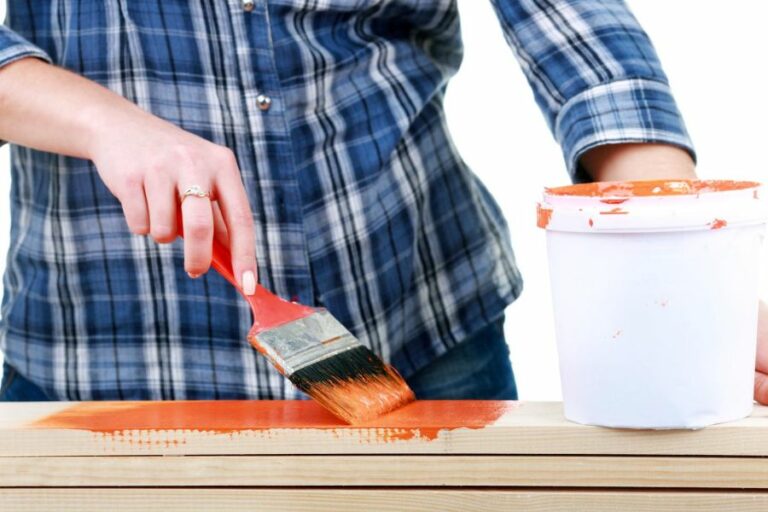Shimmering Indoor Coating Varieties, 25 Things You Should Know
Have you ever wondered how to add that extra touch of elegance and glamour to your indoor spaces? Well, you’ve come to the right place for answers! There’s quite a variety of shimmering indoor coatings available that can give your home or office an exquisite appearance like never before.
Shimmering indoor coating varieties:
Shimmering indoor coatings include metallic paints, glitter coatings, pearlized finishes, glass bead wallcoverings, and liquid crystal paints. Each variety offers unique aesthetics and application possibilities, enabling homeowners and interior designers to add elegance and sparkle to indoor spaces. Top-quality products and professional installation are recommended for the best results.

Discover an array of dazzling indoor coating options to elevate your interior design! Uncover unique finishes, textures, and colors that will enchant and delight. Read on to explore the possibilities awaiting you!
Contents
- 1 Dazzling Interior Paint Options
- 2 Creating a Shimmer Effect with Indoor Paint
- 3 Discover Sparkling Paint for Your Walls
- 4 Ultimate Guide to Adding Shimmer to Wall Paint
- 5 Exploring Shimmering Paint: Definition and Use
Dazzling Interior Paint Options
Homeowners and interior designers often look for ways to add a touch of elegance and sparkle to their indoor spaces. One popular way to achieve this effect is by using shimmering indoor coatings. These coatings come in a range of varieties, each with its unique properties and application possibilities.
This article will explore some of the most popular shimmering indoor coating options, their benefits, and recommendations for selecting the right coating for your space.
• Metallic Paints
Metallic paints feature fine metallic particles mixed into the paint solution, giving them a shimmering appearance. These particles reflect light, creating a captivating effect on any surface, making them perfect for accent walls, furniture, or decorative pieces.
There are many metallic paint options available in the market, including gold, silver, bronze, and copper. When selecting metallic paint, consider the overall color scheme of your space to ensure the final outcome complements the surrounding elements.
Additionally, it is recommended to work with high-quality metallic paints, as low-quality options may have uneven particle distribution or tarnish over time.
Recommendation: Modern Masters Metallic Paint offers a high-quality selection of metallic paint colors.
• Glitter Coatings
Glitter coatings are another popular shimmering indoor option, perfect for adding glamour and excitement to any room. These coatings are usually clear or semi-transparent, containing suspended glitter particles that sparkle when exposed to light.
They can be applied over a base color, allowing the underlying paint to show through or directly onto a prepared surface.
Ideal for highlighting feature walls, ceilings, or focal points, glitter coatings can provide a dramatic impact in both residential and commercial settings. When choosing a glitter coating, consider the size and color of the particles to ensure they align with your design vision.
Recommendation: Rust-Oleum Glitter Interior Wall Paint is a high-quality option for glitter coatings.
• Pearlized Finishes
Pearlized finishes create a soft, luminous sheen that can enhance any interior design style. These finishes are achieved by blending translucent, pearl-like pigments into a clear coating, giving a smooth, iridescent effect to the applied surface.
Pearlized finishes are excellent choices for spaces where a subtle shimmer is desired rather than dramatic sparkle. They can add a touch of elegance to any room, complementing contemporary, transitional, and traditional style settings.
When applying pearlized finishes, consider using a paint additive or purchasing pre-mixed pearl paint for consistent results.
Recommendation: Benjamin Moore Studio Finishes Pearl Shimmer Glaze is an excellent option for pearlized finishes.
• Glass Bead Wallcoverings
For those looking to make a statement, glass bead wallcoverings provide a luxurious, high-shine finish. These wallcoverings consist of tiny glass beads embedded into the coating, creating a dazzling, tactile texture.
They are perfect for adding a touch of glamour and sophistication to living rooms, dining rooms, or entryways.
To achieve the desired effect, it’s essential to work with high-quality glass bead wallcoverings, as poorly manufactured options may lack the same level of shimmer and robustness.
Keep in mind that glass bead wallcoverings may require professional installation, as manipulating the material can be challenging for the inexperienced.
Recommendation: Maya Romanoff Beadazzled Glass Bead Wallcovering is a stunning and high-quality option.
• Liquid Crystal Paints
For a truly unique and eye-catching shimmer, liquid crystal paints offer a color-changing experience. These pigments react to temperature changes or light sources, revealing a dazzling, dynamic sheen that shifts between multiple colors.
They are perfect for adding a hint of iridescence to ceilings, walls, or architectural elements, creating an immersive and enchanting atmosphere.
Liquid crystal paints are, however, a specialty product and may be more challenging to source or apply than other shimmering options. Professional installation is highly recommended, as the process can be complex.
Recommendation: LCR Hallcrest’s Chromazone Liquid Crystal Paint is a high-quality option for those interested in this innovative coating.
• Final Thoughts
Shimmering indoor coatings come in a wide range of varieties, each offering unique aesthetics and application possibilities. When choosing the right option, consider factors such as desired effect, color scheme, and budget.
Whichever shimmering finish you choose to elevate your space, the results will be captivating and dazzling.
For further information on shimmering coatings and finishes, The Paint Quality Institute offers valuable resources and expert advice.
Creating a Shimmer Effect with Indoor Paint
• Choosing the Right Paint Type
There are various types of paints available in the market, each having different properties and intended uses. For achieving a shimmer effect, you should opt for metallic, pearlescent, or iridescent paints.
These paints contain various components like mica, metallic flakes, or color-shifting “pearls,” which give them their unique appearance.
I recommend using metallic or pearlescent paint for smaller areas or creating an accent wall. Be sure to select a quality product from a reputable brand, ensuring a better application and longer-lasting shimmer effect.
• Proper Surface Preparation
Before you start painting, it is crucial to prepare your walls properly. A well-prepared surface will not only ensure smooth paint application but also enhance the shimmer effect. Follow these steps for preparing your walls:
- Cleaning the walls: Remove any dust, dirt, or grease marks from the walls by wiping them down with a damp cloth and mild detergent. Rinse afterward with plain water and let the walls dry completely.
- Repairing any damages: Inspect the walls for any cracks, holes, or dents. Use a putty knife to fill these imperfections with a suitable filler or patching compound. Allow it to dry and then sand the repaired areas to achieve a smooth surface.
- Priming the walls: Apply a high-quality primer to the walls, which will provide an even base for your shimmer paint. A tinted primer is recommended, especially when applying a darker color shimmer paint. Allow the primer to dry completely before applying the paint.
• Mixing the Shimmer Paint
While some shimmer paints come pre-mixed, others require manual mixing. If your paint requires mixing, carefully follow the manufacturer’s instructions for the correct ratio of paint to shimmer additive or glaze.
For a bolder shimmer effect, you can increase the ratio of shimmer additive or glaze. However, ensure that the mixed paint remains smooth and easy to apply.
Make sure to stir the paint thoroughly, creating a uniform mixture, and repeat this step during the painting process, as shimmer additives may settle at the bottom of the paint can.
• Techniques for Applying Shimmer Paint
There are multiple techniques to apply shimmer paint, depending on the desired effect. Some popular methods are:
1. Standard Roller Application
For a subtle, even shimmer, a standard roller application works well. Follow these steps:
- Pour the shimmer paint into a paint tray and load your roller evenly.
- Apply the paint in a ‘W’ pattern, spreading it evenly onto the walls.
- Smooth the paint by rolling over the applied area in vertical and horizontal directions without applying pressure.
2. Rag Rolling
Rag rolling creates a textural effect with the shimmer paint. Here’s how to do it:
- Apply a base color (non-shimmer) to the walls using a roller and let it dry.
- Dip a clean, lint-free rag into the shimmer paint and wring out the excess.
- Apply the paint using a rolling motion, creating random patterns on the wall.
- Work in small sections, ensuring a uniform application.
3. Sponge Painting
Sponge painting is another method to create texture with shimmer paint:
- Follow the same base color application as in rag rolling.
- Dip a sea sponge into the shimmer paint, removing excess paint to avoid drips.
- Dab the sponge onto the walls, creating random patterns and overlapping applications for a more natural effect.
• Curing and Maintenance
After applying the shimmer paint, ensure proper drying and curing times as mentioned by the manufacturer. Typically, it takes about 24-48 hours for the paint to dry and up to 4 weeks for complete curing. Until fully cured, avoid touching the walls or cleaning them to prevent any damage.
For regular maintenance, use a soft cloth or duster to remove any dust or debris from the surface. If necessary, wipe with a damp cloth and mild detergent to clean marks or stains.
• Safety Precautions
Observe safety precautions while painting, such as wearing protective gloves, masks, and safety glasses. Ensure proper ventilation by keeping doors and windows open, allowing paint fumes to dissipate. Additionally, ensure that the mixed shimmer paint is disposed of as per local environmental regulations.
For more information on painting techniques and safety precautions, visit The National Institute of Building Sciences.
Step | Description |
|---|---|
1 | Choose a base paint color and a shimmer/glitter product that compliments the color. |
2 | Test the shimmer mixture by combining a small amount of glitter/shimmer with a small sample of paint, then apply to a test surface. |
3 | Once satisfied with the shimmer effect, mix the glitter/shimmer into your base paint according to the manufacturer’s instructions or until you reach the desired level of shimmer. |
4 | Stir the paint and glitter/shimmer mixture thoroughly and consistently to prevent the shimmer from settling at the bottom of the paint can. |
5 | Apply the shimmer paint using a roller or brush, ensuring that you maintain even coverage, and stir the paint mixture consistently to maintain an even distribution of shimmer. |
6 | Allow the paint to dry according to the manufacturer’s instructions and apply additional coats as needed to achieve your desired level of shimmer and coverage. |
Discover Sparkling Paint for Your Walls
Everyone loves a touch of sparkle, and incorporating glitter or shimmer effects into your paintings can take them to a whole new level. Many people wonder, “Is there paint with sparkles in it?” The answer is a resounding yes.
• Types of Sparkly Paint
There are several types of paint that contain sparkles, and they can be broadly categorized into glitter paint, metallic paint, and pearlescent paint.
– Glitter Paint
Glitter paint contains tiny reflective particles that create a sparkling effect when light hits them. These particles are suspended in a clear or colored base, and the size and concentration of the glitter determine the overall sparkle intensity.
Glitter paint is available in a variety of colors and finishes, including fine glitter, chunky glitter, and holographic glitter.
I recommend checking out Rust-Oleum’s Glitter Interior Wall Paint, as it offers a durable, multi-dimensional shimmer that can be applied to walls, wood, metal, and other surfaces.
– Metallic Paint
Metallic paint is formulated with metallic pigments that produce a reflective, lustrous finish, mimicking the appearance of metal. This type of paint is popular for adding an elegant touch of glamour to any painting project.
Many metallic paints are available in different metallic shades like gold, silver, bronze, and copper.
I have personally had great success using Golden Acrylics’ Metallic Paints, which offer a broad range of colors and sheens to choose from.
– Pearlescent Paint
Pearlescent paint, also known as iridescent paint, creates an opalescent or shimmering effect by blending transparent pigments with reflective particles. The particles refract and reflect light differently, depending on the viewing angle, giving the paint a shifting color effect.
Pearlescent paint is available in various colors and is particularly popular for automotive and decorative applications.
I recommend Liquitex’s Soft Body Acrylics, which offer a range of pearlescent and iridescent colors that can be mixed and applied to various surfaces.
• Applications of Sparkly Paint
Sparkly paint can transform any painting project and add a touch of whimsy, sophistication, or glamour, depending on the desired effect. Here are some popular applications for these paints:
– Wall Decoration
Give your living space an instant facelift by applying sparkly paint to an accent wall, creating a stunning focal point. Glitter, metallic, and pearlescent paints all work well for this purpose.
– Furniture Makeover
Revitalize old furniture with a coat of sparkly paint, adding character and charm without breaking the bank. Metallic paint, in particular, can create an eye-catching transformation.
– Canvas Art
Express your creativity by incorporating sparkle and shimmer into your canvas paintings. Use glitter, metallic, or pearlescent paint to enhance certain features or add dramatic depth to your artwork.
– Craft Projects
Sparkly paints can be a fun and engaging addition to various craft projects, such as scrapbooking, card-making, and DIY decor.
• Factors to Consider Before Purchasing Sparkly Paint
Before purchasing sparkly paint, consider the following factors to ensure you make an informed decision and achieve the desired effect:
– Purpose
Determine the purpose of your painting project, as this will help you choose the appropriate type of paint glitter, metallic, or pearlescent-based on the finish and effect you want to achieve.
– Surface
Consider the surface you plan to paint, as different sparkly paints adhere better to specific surfaces. Check the manufacturer’s instructions to ensure the paint is suitable for your intended application.
– Color and Finish
Choose a sparkly paint that complements or contrasts with your overall color scheme. Keep in mind that different paint types offer various finishes, such as high gloss, satin, or matte.
– Durability
Consider whether the sparkly paint you choose is durable enough for your project. For high-traffic areas or outdoor applications, opt for products that are formulated to withstand wear and tear.
– Safety
Look for products that are non-toxic and environmentally friendly, particularly if you plan on using sparkly paint in a child’s room, playroom, or other sensitive areas.
• Conclusion
Sparkly paint can make a striking impact in various applications, from home decor to canvas art and crafts. By understanding the different types of paint and considering the factors listed above, you can choose the perfect product to add a touch of sparkle to your next project.
For additional resources on sparkly paint, you can visit the National Center for Education in the Arts (NCEA) website, which features educational materials, artist profiles, and techniques to advance your knowledge in the world of painting and creativity.
Ultimate Guide to Adding Shimmer to Wall Paint
• Overview
Adding shimmer to your wall paint is a fantastic way to create a unique and captivating effect in your home. Shimmering paint can bring life to your walls, making them look lively and dynamic rather than flat and boring.
• Choosing the Right Paint
Before diving into the process of adding shimmer, choosing the right paint for your walls is essential. The base color plays a pivotal role in determining the final appearance of the shimmer effect. Some paint colors work well with shimmer, while others may not provide the desired impact.
I recommend opting for a paint color that complements the shimmering particles, creating a harmonious and visually appealing effect.
When selecting paint, it’s also important to choose a high-quality product. Paints with higher pigment concentrations will result in better coverage and richer colors. These superior paints often have a more consistent consistency, making it easier to add shimmering particles.
To ensure the best results, consult with a professional at a paint store or use online resources, such as this website from the U.S. Department of Energy, to help with paint selection.
• Shimmering Techniques
– Paint Additives
One popular method for adding shimmer to wall paint is by using paint additives. These additives are finely ground, iridescent particles that can be mixed directly into your chosen wall paint.
They are available in a variety of colors and sizes, allowing you to create an effect as subtle or dramatic as you desire.
To use paint additives, mix the desired amount of shimmer particles into the paint according to the manufacturer’s instructions. Be sure to stir the paint thoroughly to ensure an even distribution of the shimmer.
Once the paint and shimmer particles are combined, apply the mixture to your walls using a roller or brush, just as you would with regular paint. The additives will create a shimmery effect as the paint dries.
– Glaze
Another approach to achieve a shimmering effect is applying a glaze. Glazes are thin, translucent layers of paint that can be applied over a base color. They can be tinted with shimmer particles to add a subtle, iridescent quality to your walls.
To use a glaze, first, paint your walls in the desired base color and allow it to dry completely. Next, mix the shimmer particles into a clear glaze following the manufacturer’s instructions. Apply the glaze evenly over the base color using a brush, roller, or sponge.
– Spray Paint
Spray paint is yet another technique for adding shimmer to wall paint. Shimmering spray paints are available in a variety of colors and finishes, making it easy to find the perfect match for your walls. This method is particularly useful for smaller, more intricate areas or when a smooth, even shimmer is desired.
To begin, paint your walls with the base color of your choice and allow it to dry completely. Then, using the shimmering spray paint, lightly dust the walls with the spray. Apply in short, even bursts and move across the wall slowly to ensure even coverage.
Be sure to protect any surrounding surfaces and areas from overspray by using drop cloths and painter’s tape.
• Considerations for Shimmering Walls
– Lighting
One of the most important factors to consider when adding shimmer to your wall paint is the lighting in the space. Shimmering walls become truly eye-catching when they are illuminated, so be sure to assess the lighting situation in your room before committing to this decoration technique.
Natural sunlight or well-placed artificial light sources will help bring out the best in your shimmering walls.
– Texture
Adding shimmer to wall paint can create a new texture and visual appeal to your walls. However, it’s essential to understand that shimmer particles are more likely to highlight any imperfections on the wall.
To achieve a flawless finish, ensure your walls are clean and smooth before applying any paint or shimmering additives.
– Balance
While shimmering walls can be a striking design feature, it’s important to maintain a balance between shimmer and the other elements in the room. Avoiding an excessive amount of shimmer will help maintain harmony and prevent the space from feeling too flashy or overwhelming.
In conclusion, adding shimmer to wall paint is a fantastic way to create a unique and captivating look in your home. By choosing the right paint color, using the proper technique, and considering factors such as lighting, texture, and balance, you will be well on your way to achieving beautiful shimmering walls.
Step | Description |
|---|---|
1 | Choose a shimmer additive compatible with your paint type. |
2 | Prepare the wall by cleaning and priming it if necessary. |
3 | Stir the paint well before mixing in the shimmer additive. |
4 | Mix the shimmer additive into the paint according to the manufacturer’s instructions. |
5 | Apply the paint evenly to the wall using a roller or brush, making sure to maintain a wet edge to prevent streaks or lines. |
6 | Allow the paint to dry completely and apply a second coat if necessary. |
Exploring Shimmering Paint: Definition and Use
Shimmering paint, also known as iridescent or metallic paint, is a type of paint that contains tiny particles of metal or synthetic materials, which create a lustrous and reflective finish on surfaces. This type of paint is widely used in various applications, ranging from automotive finishes to arts and crafts projects.
• Properties of Shimmering Paint
Shimmering paint is characterized by its reflective quality, which is created by the suspended particles in the paint. These particles (often mica, titania, or synthetic materials) catch and reflect light, resulting in a shimmering or iridescent effect. Some additional properties of shimmering paint include:
- High durability
- UV resistance
- Chemical resistance
- Improved hiding power
- Enhanced aesthetics
Due to its distinct visual effect and the properties mentioned above, shimmering paint has become popular in various industries, including automotive, architectural, and decorative applications.
• Types of Shimmering Paint
There are various types of shimmering paint available, each with its unique appearance and effects. Some common types of shimmering paint include:
– Metallic Paint
Metallic paint contains tiny metal particles (usually aluminum), which give the paint its reflective quality. This type of paint gives a realistic and authentic metal finish, making it popular for use in automobiles, furniture, and sculpture.
– Iridescent Paint
Iridescent paint is created by using small particles of titania, mica, or synthetic materials, which create a color-shifting effect. This paint appears to change color depending on the angle of light hitting the surface, resulting in a stunning and unique effect.
Iridescent paints are often used in interior design and decorative painting projects, as well as on cars and bikes.
– Pearlescent Paint
Pearlescent paint combines the characteristics of metallic and iridescent paint to create a unique, shimmering effect. It contains mica particles, which provide reflective quality, and it can have either a transparent, translucent, or opaque base.
Pearlescent paint is popular for use in automobiles, guitars, and other decorative applications.
• Benefits of Using Shimmering Paint
Shimmering paint offers various benefits over traditional flat paints, including:
– Aesthetic Appeal
The shimmering effect of this type of paint enhances the visual appeal of surfaces, making them stand out and appear more vibrant. Shimmering paint is ideal for use in projects where a unique and eye-catching appearance is desired.
– Improved Durability
Due to its unique composition, shimmering paint offers increased durability compared to traditional paints. It provides better resistance to UV radiation, chemicals, and physical wear, making it suitable for use in both interior and exterior applications.
– Enhanced Hiding Power
The reflective particles in shimmering paint improve its hiding power, meaning it can effectively cover and conceal imperfections on surfaces. This makes it an excellent choice for use on older, worn surfaces or in applications requiring a high level of finish quality.
• Tips for Choosing and Applying Shimmering Paint
To ensure the best results when using shimmering paint, consider the following recommendations:
– Choose the Right Type
Before selecting a shimmering paint, consider the desired visual effect and the surface on which it will be applied. Consult paint suppliers and manufacturers for guidance on the most suitable type of shimmering paint for your specific needs.
– Prepare the Surface
Proper surface preparation is crucial for achieving a smooth and even finish with shimmering paint. Ensure the surface is clean, dry, and free from any dust, dirt, or debris. Prime the surface, if necessary, before applying the shimmering paint.
– Apply Multiple Coats
Applying multiple coats of shimmering paint will help to enhance the reflective effect and improve the overall finish quality. Always follow the manufacturer’s instructions regarding drying times between coats of paint.
– Use Quality Brushes and Rollers
Using quality brushes and rollers when applying shimmering paint can help to achieve a smooth and uniform finish. High-quality brushes and rollers will also help to prevent the shedding of bristles during the application process.
– Practice First
Before applying shimmering paint to a large surface, practice on a small, inconspicuous area or test piece to get a feel for the paint and the application technique.
In conclusion, shimmering paint offers a unique and visually stunning effect for various applications. With its enhanced durability, aesthetic appeal, and improved hiding power, it has become a popular choice for many projects.
When choosing and applying shimmering paint, follow the recommendations provided in this article to ensure a successful and long-lasting finish.
For more information on shimmering paint, you can visit this informative page from the National Academies Press website.







